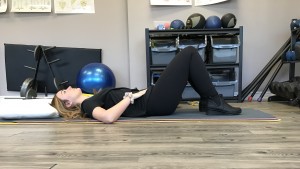I Just Had a Baby…Now What Do I Do?
If you are reading this and you have just given birth to a beautiful baby. Congratulations! You have just completed a physiological marathon and you deserve many praises. The female body has an amazing ability to grow and adapt to support the growth of another human being. This means that the first thing a new mother should do when recovering from labor and delivery is REST.
A vaginal delivery results in a large stress on all of our body systems, but especially on the pelvic floor muscles. As a result, new moms should spend majority of their first week relaxing in a comfortable lying position in order to give these tissues time to heal. If you had a cesarean section, you just underwent major abdominal surgery, which means that you also need to take some time to rest and heal those tissues. Think about it like the cool down portion of a workout – the purpose of a cool down is to bring the body back to its resting state.
How Soon Can I Start Exercising?
Some of you may be wondering when it is safe to return to exercise. The answer to this question is different and unique for each person, however there are a few exercises that are safe to do immediately post labor and delivery.
Pelvic floor breathing: Inhale and feel your ribs expanding toward the back, side and front. As you do this, imagine your pelvic floor muscles relaxing and opening. This will provide a gentle lengthening to your healing pelvic floor muscles, which is an important aspect in ensuring their optimal functioning.
Pelvic floor activations: Activate your pelvic floor muscles by imagining you squeezing and lifting a marble up your vaginal opening. Hold this activation for several seconds, then let go of the activation. The rythmic movement of your pelvic floor muscles contracting and lengthening (see above exercise) also acts as a fluid pump to help move excess blood and lymphatic fluid from your pelvis.
Belly hugs aka. Tranversus abdominus (TA) activations: Start lying on your back with your knees bent. Then activate your TA muscle by trying to spread your front hip bones apart.
If you have visited a pelvic floor physiotherapist while you were pregnant, you likely know how to complete the above exercises properly. If you did not, it is never too late to learn! Book an assessment with a pelvic floor physiotherapist to learn how to properly lengthen and activate these important core muscles – your body will thank you later!




